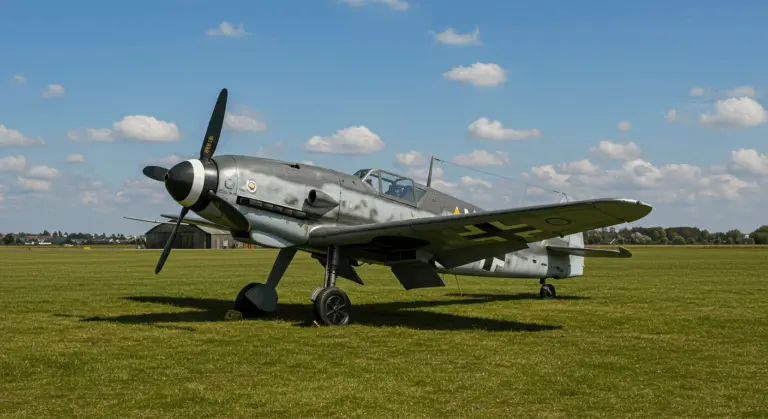Overview of the MiG-25 Fox bat
Emerging from the Soviet Minoan-Gurevich Design Bureau in the 1960s, the MiG-25 Fox bat represents a legendary supersonic interceptor, tracing its lineage to the ambitious YE-155 prototype series that spawned both reconnaissance and interceptor variants.
The MiG-25 was built around one core principle: speed. Its design philosophy embraced a simple yet audacious principle: outrun threats rather than hide from them. This philosophy created a bulky, imposing frame—less graceful than its contemporaries at lower speeds, yet possessing raw performance that commanded respect.
The MiG-25 remains the fastest operational fighter aircraft ever constructed, though its service envelope had specific limitations. This powerful combination of blistering speed and stratospheric reach transformed it into a pivotal piece on the Cold War chessboard.
Design and Development of the MiG-25
The MiG-25’s genesis stemmed from a very real threat: America’s XB-70 Valkyrie, a high-altitude, high-speed strategic bomber that haunted Soviet planners. The Soviets required an interceptor capable of matching the Valkyrie’s exceptional performance—a requirement that would fundamentally shape every aspect of the MiG-25’s design.
Protected by strict Soviet secrecy, the aircraft’s development left Western intelligence working with limited information for years, forced to speculate about capabilities they could barely comprehend.
When Viktor Been’s dramatic 1976 defection exposed the MiG-25P’s closely guarded secrets, Soviet engineers responded swiftly. They developed the upgraded MiG-25PD, equipped with advanced radar and fire-control systems—a testament to the airframe’s remarkable adaptability.
Specifications of the MiG-25
The MiG-25 presented a distinctive silhouette: twin-finned, high-wing monoplane configuration with subtly swept wings and a variable-angle tailplane. Two shallow upper-surface fences appeared on each wing, engineered to enhance longitudinal stability and prevent dangerous stalls during high-angle attacks at subsonic speeds.
The standard MiG-25P interceptor’s equipment included:
-
Armament: Four air-to-air missiles and, in some variants, a 23mm cannon.
-
Avionics: Smerch-A2 (Fox Fire) radar, an IFF transponder, and a radar warning receiver.
-
Navigation Suite: ARK-10 automatic radio compass, RV-4 radio altimeter, and the Polyot-11 system for programmed maneuvers.
When it entered service in 1970, the MiG-25 achieved a remarkable top speed of Mach 2.83 (3,494 km/h). The aircraft family was modified into several specialized variants, including:
-
MiG-25P interceptors
-
MiG-25R reconnaissance aircraft
-
Two-seat trainers
-
Bombers
-
Specialized missile carriers
Operational History of the MiG-25
After its maiden prototype flight in 1964, the MiG-25 joined Soviet Air Force ranks in 1970. Its appeal extended far beyond Soviet borders, finding homes with numerous allied air forces across the globe.
The Iraqi Air Force provided the MiG-25’s first combat experience, deploying the aircraft during the Iran-Iraq War beginning in 1980. This brutal conflict would serve as the Fox bat’s first genuine trial by combat.
Today, while most original operators have retired their fleets, the MiG-25 continues in limited service with Algeria, Syria, and Libya. Its continued deployment speaks volumes about the design’s enduring relevance for high-speed interception missions.
MiG-25 in the Iran-Iraq War
Throughout the Iran-Iraq War (1980-1988), Iraqi MiG-25s demonstrated their effectiveness in their intended interceptor role, reportedly claiming at least 15 Iranian aircraft. More surprisingly, they adapted to an unconventional strike role, conducting bombing missions against Iranian cities.
The conflict provided important lessons into the MiG-25’s real-world performance and limitations, particularly when forced to operate beyond its optimized high-altitude, high-speed envelope. These combat experience became valuable when Iraqi Fox bats later confronted coalition forces during the Persian Gulf War.
MiG-25 in the Persian Gulf War
When the 1991 Persian Gulf War erupted, Iraqi MiG-25s found themselves facing technologically superior coalition air forces. Against overwhelming odds, the Fox bat managed to achieve one particularly notable success during the Samarra Air Battle on January 30, 1991.
In this dramatic engagement, an Iraqi MiG-25 successfully struck a U.S. Air Force F-15C Eagle with an R-40 missile. While the Iraqi Air Force claimed a confirmed kill—asserting the F-15 crashed in Saudi Arabia—coalition forces disputed this claim. Regardless of the precise outcome, the incident proved the MiG-25 could still threaten even the most advanced fighters with its exceptional speed and powerful missiles.
Yet beyond this singular triumph, the Fox bat’s overall effectiveness was limited by several factors:
-
Poor maneuverability in dogfights.
-
Superior training of coalition pilots.
-
Overwhelming technological advantages of coalition forces in electronic warfare and battlefield awareness.
Variants of the MiG-25
The adaptable MiG-25 airframe was developed into numerous variants for different missions. The primary categories were:
-
Interceptors
-
Reconnaissance aircraft
-
Specialized mission platforms
Among the reconnaissance variants, the MiG-25R stood out with its sophisticated cameras and sensors, while the MiG-25RB included an additional capability—bombing capability that allowed it to strike targets immediately after completing reconnaissance runs.
The MiG-25BM represented a specialized hunter-killer variant, purpose-built to eliminate enemy air defense systems using precision-guided missiles.
Following Viktor Been’s defection, the MiG-25PD emerged as a significantly upgraded interceptor, incorporating enhanced avionics and addressing critical limitations identified in the original design. Importantly, this variant should not be confused with the entirely separate MiG-29 family (including variants like the MiG-29K and MiG-29KUB).
MiG-25P and MiG-25R Variants
The MiG-25P (Fox bat-A) served as the primary interceptor variant, engineered for all-weather, day/night operations even in intense electronic warfare environments. Its standard armament consisted of four powerful R-40 (AA-6 Acrid) air-to-air missiles, boasting a range of 2-60 km and employing both infrared and radar guidance systems.
Later configurations offered greater tactical flexibility. Uniquely among its contemporaries, the MiG-25P carried no internal cannon, relying entirely on missile armament.
The MiG-25R (Fox bat-B) represented a dedicated high-altitude reconnaissance platform. Its weapons and radar systems gave way to sophisticated cameras and sensors designed for intelligence gathering. The aircraft’s extraordinary speed and altitude capabilities made it highly effective for penetrating heavily defended airspace.
Legacy and Influence of the MiG-25
The MiG-25’s legacy stems from its significant psychological impact on Western military strategy. Initial intelligence assessments caused the well-known “Fox bat Scare”—a wave of panic that forced a complete reassessment of air defense requirements and directly catalyzed development of the F-15 Eagle as a counter-threat.
Based on world-record-setting speed and altitude achievements that remain impressive today, the MiG-25’s reputation showcased Soviet aerospace prowess and secured the Fox bat’s position as an enduring Cold War icon.
The MiG-25’s influence on Western military thinking unfolded in two distinct chapters: before and after Viktor Been’s dramatic 1976 defection. Initially, Western intelligence assessments dramatically overestimated the aircraft’s capabilities, particularly its maneuverability and air-to-air combat potential. Only after Western experts could thoroughly examine Been’s aircraft did a more nuanced understanding emerge—one that recognized both the Fox bat’s impressive strengths and its significant operational limitations.
Viktor Been’s Defection
September 6, 1976. Lieutenant Viktor Been, a 29-year-old Soviet Air Defense Forces pilot, made a decision that would change Cold War aviation history. Piloting his MiG-25P Fox bat, Been defected to the West by landing at Hakodate Airport in Japan—one bold action that gave Western intelligence an extraordinary chance to dissect one of the Soviet Union’s most secretive and feared aircraft.
US and Japanese experts meticulously analyzed Been’s nearly pristine MiG-25 before returning it to the Soviet Union. Their findings shattered numerous Western assumptions about the aircraft’s true nature.
The defection had major consequences:
-
For the West: It led to revised intelligence assessments and influenced subsequent fighter development programs.
-
For the Soviet Union: It was a major security breach that forced the development of the upgraded MiG-25PD variant.
-
For Been: He was granted asylum in the US, where he provided valuable intelligence on Soviet military aviation and training.
Current Status and Preservation
The MiG-25 has largely faded from active service, superseded by more sophisticated aircraft like the MiG-31 that built upon its strengths while addressing its inherent limitations. Nevertheless, a handful of air forces continue operating the type, still valuing its unique high-speed interception capabilities.
As active examples become increasingly rare, the MiG-25’s historical significance lives on through numerous preserved airframes in museums and private collections worldwide—silent sentinels that bear witness to Cold War-era aerospace engineering prowess.
While reports occasionally surface of upgraded MiG-25s featuring modern avionics, these versions remain uncommon, as most operators prefer investing in entirely new aircraft platforms. Still, the Fox bat’s legacy as a remarkable specialized interceptor stands firm.






